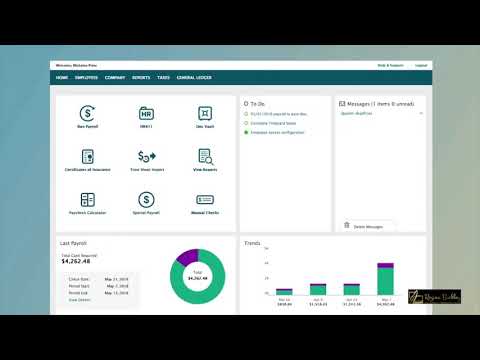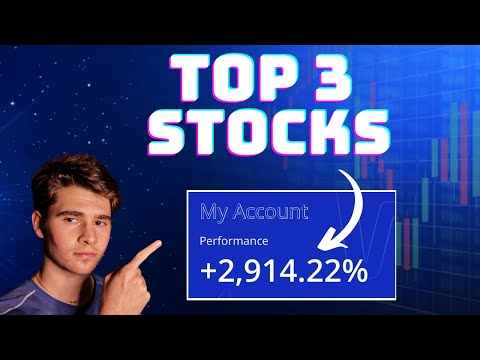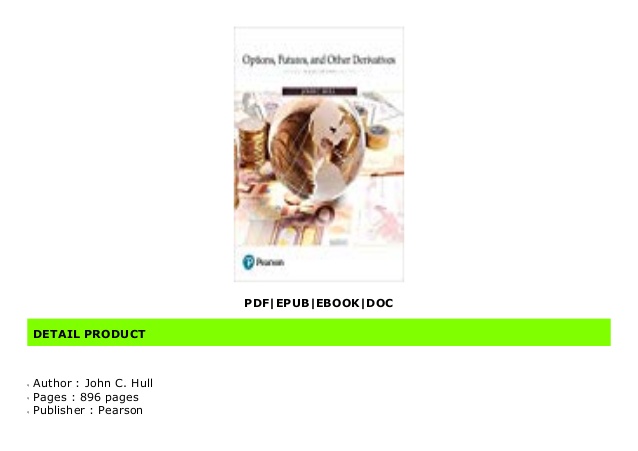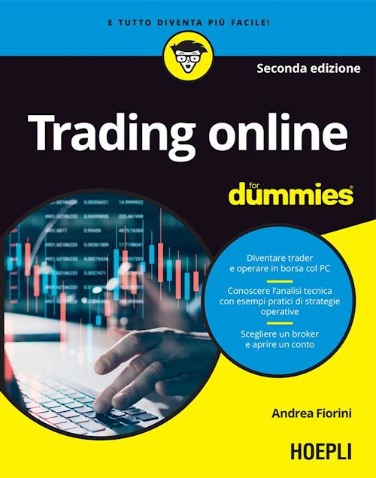
To determine the cup and handle, follow price movements on a chart and look for the “u” shape and the downward handle. Some rules will help you find a valid Cup and Handle pattern relating to its length, depth, and the underlying asset’s liquidity. An inverted “cup and handle” is used to identify selling opportunities, which is a sign of an upcoming bearish movement.


A chart pattern is a graphical presentation of price movement by using a series of trend lines or curves. Chart patterns can be described as a natural phenomenon of fluctuations in the price of a… A breakout is when the price moves above a resistance level or moves below a support level.
What happens after the formation of the cup and handle pattern?
William O’Neil initially recognized this popular stock chart pattern in 1988. To identify the cup and handle formation O’Neil claims the handle should extend no longer than one-fifth to one-quarter the length of the cup. The handle will remain close to the prior highs, which will squeeze out the short-sellers and cause new buyers to enter the market. What if I told you that taking the depth of the cup and adding it to the breakout value is the wrong way to set your price target. Every book and blog you can find on the web will say to just sell once this one-to-one ratio is achieved. The above figure shows an example of an inverted cup with handle chart pattern .
https://en.forexbrokerslist.site/ makes a gentle rounding turn, forming the inverted cup. Following the cup is the handle, a flat region in this example that stretches from March and into April. Price jumps upward for several weeks and creates another inverted cup before starting a new trend downward. The cup and handle pattern is a popular candlestick pattern that exhibits continuation of bullish trends after a consolidation phase.
Recognizing Cup and Handle Patterns
The pattern is a bullish continuation formation that marks a consolidation period, with the right-hand side of the pattern typically experiencing lower trading volume. The cup part of the pattern forms after a price rally and looks like a gradually rounded bottom of a bowl. The cup and handle pattern is a formation on the price chart of an asset that resembles a cup with a handle. As its name implies, the pattern consists of two parts — the cup and the handle. Further down in the article we have several charts to show how it looks like in a chart. The Cup and Handle pattern is a bullish continuation or reversal price formation, often used to identify buying opportunities.
- That’s not a problem; it’s often a stock’s way of offering a buy point that’s clearer or lower than that suggested by the larger pattern.
- The cup and handle formation is created when the price of an asset falls but then makes its way back up to the point where the fall started.
- The pattern on the left is more complex as the cup pattern is wavy and harder to identify.
- The Big Tech share basket chart provides an example of this.
- The price may drop slightly, then rally back up, forming another handle or breaking above the initial handle.
When the forex markets are not open, the pair tends to be quieter, which means less movement, and it also means that intraday cup and handle patterns will not form as strongly. This is because there is not sufficient momentum to fuel a breakout and bullish trend. A cup and handle is typically considered a bullish continuation pattern.
Cup and Handle Pattern: Tell-tale Bullish/Bearish Signals
The image below depicts a classic cup and handle formation. Place a stop buy order slightly above the upper trend line of the handle. Order execution should only occur if the price breaks the pattern’s resistance. Traders may experience excess slippage and enter a false breakout using an aggressive entry.
A cup and handle is a technical analysis pattern that appears on a chart as a U-shaped pattern, followed by a small downward drift, resembling a handle. Cup and handle patterns can also occur on shorter timeframes, although trading these requires quick recognition and confirmation of the breakout at the end of the handle in order to profit. Again, beware cup and handle patterns that form at the end of a trend rather than partway through it, as they are less likely to signal a strong continuation. A Cup and Handle is a chart pattern where the price movement of an asset resembles a “cup” followed by a downward trending price pattern.
You can see the https://forex-trend.net/ of a handle on the right side of the cup. There is a breakout from concerned trading range, signalling continuation of the prevailing uptrend. Cup and handle pattern is indicative of bullish signals or an uptrend. Moreover, when you are looking at the right side, you can see that trade volume decreases in that corner. While there are many different types of chart formations out there, the cup and handle pattern strategy is one you may want to add to your trading arsenal because of its reliability.
The reason I like to time box the handle, is because I want to avoid the scenario of being trapped in a sideways conundrum. Your email address is stored securely and updates are pertinent to cryptocurrency trading. Stay on top of upcoming market-moving events with our customisable economic calendar. Find the approximate amount of currency units to buy or sell so you can control your maximum risk per position. In our crypto guides, we explore bitcoin and other popular coins and tokens to help you better navigate the crypto jungle.

In my experience, it’s also one of the more reliable https://topforexnews.org/ patterns, as it takes quite some time for the formation to setup. In this article, I will cover 3 strategies for trading cup and handle patterns that you will not find anywhere else on the web. Yes, the cup and handle pattern is considered a bullish continuation pattern.
Expert market commentary delivered right to your inbox, for free.
The pattern is formed by a drop, a rally, then another drop back to where the rally started. A handle forms, which should be less than a third the size of the cup. An ‘inverted cup and handle’ is a chart pattern that indicates bearish continuation, triggering a sell signal. Most traders set a target by adding height to the breakout point of the handle, irrespective of the cup’s height. For example, if a cup forms between $40 and $39, and the breakout point is $40, the exit strategy should be at $41.
The cup and handle is considered a bullish signal, with the right-hand side of the pattern typically experiencing lower trading volume. The pattern’s formation may be as short as seven weeks or as long as 65 weeks. Above is an example of two cup and handles that formed in the Big Tech share basket on our Next Generation trading platform. The pattern on the left is more complex as the cup pattern is wavy and harder to identify. The pattern on the right is more traditional, with a clear cup shape, followed by a handle breakout to the upside.
78% of retail investor accounts lose money when spread betting and/or trading CFDs with this provider. You should consider whether you understand how spread bets and CFDs work and whether you can afford to take the high risk of losing your money. Futures and forex trading contains substantial risk and is not for every investor. An investor could potentially lose all or more than the initial investment.
It is also known as the bullish cup and handle pattern, signaling a potential uptrend in prices. The cup and handle pattern is where the price initially declines, then levels off and begins to rise again, thus resembling a cup with a handle. The cup is in the shape of a “U” and the handle can be sideways or even have a slight downward drift that occurs near the “lip” of the cup. It was developed by William O Neil and first discussed in his book, How to Make Money in Stocks. The pattern completes only when the price breaks out from the handle’s trading range to signal the continuation of the previous rally. O’Neil is the innovator of the CANSLIM method and one requirement was that the stock must form some kind of a cup and handle pattern.
If you’re not ready to take on the live markets, you can open a risk-free demo account to identify the cup and handle pattern and practise your trades. You can use derivatives such as CFDs or spread bets to trade when you see the cup and handle pattern. With derivatives trading, you don’t own the underlying asset, which means you can go long or short . Once the price has reached the top of the cup, it starts moving sideways or slightly downwards to form the handle. If the handle drops below the lower half of the cup, it is no longer a ‘cup and handle’ pattern.
What Is a Cup and Handle Pattern?
When the pattern is complete, a long trade could be taken when the price breaks above the handle. However, some traders make the mistake of assuming that once a U-shape forms, the price will drop to form a handle. It may not, so you should ideally avoid trading the pattern until it has fully formed, in order to confirm the trend. You could wait for the price to break above the handle to signal that the uptrend is continuing. Thus, the cup and handle pattern is seen as a bullish continuation pattern.
Cup Handle Formation
May 4, 2022
Forex Trading
No Comments
acmmm
Contents
To determine the cup and handle, follow price movements on a chart and look for the “u” shape and the downward handle. Some rules will help you find a valid Cup and Handle pattern relating to its length, depth, and the underlying asset’s liquidity. An inverted “cup and handle” is used to identify selling opportunities, which is a sign of an upcoming bearish movement.
A chart pattern is a graphical presentation of price movement by using a series of trend lines or curves. Chart patterns can be described as a natural phenomenon of fluctuations in the price of a… A breakout is when the price moves above a resistance level or moves below a support level.
What happens after the formation of the cup and handle pattern?
William O’Neil initially recognized this popular stock chart pattern in 1988. To identify the cup and handle formation O’Neil claims the handle should extend no longer than one-fifth to one-quarter the length of the cup. The handle will remain close to the prior highs, which will squeeze out the short-sellers and cause new buyers to enter the market. What if I told you that taking the depth of the cup and adding it to the breakout value is the wrong way to set your price target. Every book and blog you can find on the web will say to just sell once this one-to-one ratio is achieved. The above figure shows an example of an inverted cup with handle chart pattern .
https://en.forexbrokerslist.site/ makes a gentle rounding turn, forming the inverted cup. Following the cup is the handle, a flat region in this example that stretches from March and into April. Price jumps upward for several weeks and creates another inverted cup before starting a new trend downward. The cup and handle pattern is a popular candlestick pattern that exhibits continuation of bullish trends after a consolidation phase.
Recognizing Cup and Handle Patterns
The pattern is a bullish continuation formation that marks a consolidation period, with the right-hand side of the pattern typically experiencing lower trading volume. The cup part of the pattern forms after a price rally and looks like a gradually rounded bottom of a bowl. The cup and handle pattern is a formation on the price chart of an asset that resembles a cup with a handle. As its name implies, the pattern consists of two parts — the cup and the handle. Further down in the article we have several charts to show how it looks like in a chart. The Cup and Handle pattern is a bullish continuation or reversal price formation, often used to identify buying opportunities.
When the forex markets are not open, the pair tends to be quieter, which means less movement, and it also means that intraday cup and handle patterns will not form as strongly. This is because there is not sufficient momentum to fuel a breakout and bullish trend. A cup and handle is typically considered a bullish continuation pattern.
Cup and Handle Pattern: Tell-tale Bullish/Bearish Signals
The image below depicts a classic cup and handle formation. Place a stop buy order slightly above the upper trend line of the handle. Order execution should only occur if the price breaks the pattern’s resistance. Traders may experience excess slippage and enter a false breakout using an aggressive entry.
A cup and handle is a technical analysis pattern that appears on a chart as a U-shaped pattern, followed by a small downward drift, resembling a handle. Cup and handle patterns can also occur on shorter timeframes, although trading these requires quick recognition and confirmation of the breakout at the end of the handle in order to profit. Again, beware cup and handle patterns that form at the end of a trend rather than partway through it, as they are less likely to signal a strong continuation. A Cup and Handle is a chart pattern where the price movement of an asset resembles a “cup” followed by a downward trending price pattern.
You can see the https://forex-trend.net/ of a handle on the right side of the cup. There is a breakout from concerned trading range, signalling continuation of the prevailing uptrend. Cup and handle pattern is indicative of bullish signals or an uptrend. Moreover, when you are looking at the right side, you can see that trade volume decreases in that corner. While there are many different types of chart formations out there, the cup and handle pattern strategy is one you may want to add to your trading arsenal because of its reliability.
The reason I like to time box the handle, is because I want to avoid the scenario of being trapped in a sideways conundrum. Your email address is stored securely and updates are pertinent to cryptocurrency trading. Stay on top of upcoming market-moving events with our customisable economic calendar. Find the approximate amount of currency units to buy or sell so you can control your maximum risk per position. In our crypto guides, we explore bitcoin and other popular coins and tokens to help you better navigate the crypto jungle.
In my experience, it’s also one of the more reliable https://topforexnews.org/ patterns, as it takes quite some time for the formation to setup. In this article, I will cover 3 strategies for trading cup and handle patterns that you will not find anywhere else on the web. Yes, the cup and handle pattern is considered a bullish continuation pattern.
Expert market commentary delivered right to your inbox, for free.
The pattern is formed by a drop, a rally, then another drop back to where the rally started. A handle forms, which should be less than a third the size of the cup. An ‘inverted cup and handle’ is a chart pattern that indicates bearish continuation, triggering a sell signal. Most traders set a target by adding height to the breakout point of the handle, irrespective of the cup’s height. For example, if a cup forms between $40 and $39, and the breakout point is $40, the exit strategy should be at $41.
The cup and handle is considered a bullish signal, with the right-hand side of the pattern typically experiencing lower trading volume. The pattern’s formation may be as short as seven weeks or as long as 65 weeks. Above is an example of two cup and handles that formed in the Big Tech share basket on our Next Generation trading platform. The pattern on the left is more complex as the cup pattern is wavy and harder to identify. The pattern on the right is more traditional, with a clear cup shape, followed by a handle breakout to the upside.
78% of retail investor accounts lose money when spread betting and/or trading CFDs with this provider. You should consider whether you understand how spread bets and CFDs work and whether you can afford to take the high risk of losing your money. Futures and forex trading contains substantial risk and is not for every investor. An investor could potentially lose all or more than the initial investment.
It is also known as the bullish cup and handle pattern, signaling a potential uptrend in prices. The cup and handle pattern is where the price initially declines, then levels off and begins to rise again, thus resembling a cup with a handle. The cup is in the shape of a “U” and the handle can be sideways or even have a slight downward drift that occurs near the “lip” of the cup. It was developed by William O Neil and first discussed in his book, How to Make Money in Stocks. The pattern completes only when the price breaks out from the handle’s trading range to signal the continuation of the previous rally. O’Neil is the innovator of the CANSLIM method and one requirement was that the stock must form some kind of a cup and handle pattern.
If you’re not ready to take on the live markets, you can open a risk-free demo account to identify the cup and handle pattern and practise your trades. You can use derivatives such as CFDs or spread bets to trade when you see the cup and handle pattern. With derivatives trading, you don’t own the underlying asset, which means you can go long or short . Once the price has reached the top of the cup, it starts moving sideways or slightly downwards to form the handle. If the handle drops below the lower half of the cup, it is no longer a ‘cup and handle’ pattern.
What Is a Cup and Handle Pattern?
When the pattern is complete, a long trade could be taken when the price breaks above the handle. However, some traders make the mistake of assuming that once a U-shape forms, the price will drop to form a handle. It may not, so you should ideally avoid trading the pattern until it has fully formed, in order to confirm the trend. You could wait for the price to break above the handle to signal that the uptrend is continuing. Thus, the cup and handle pattern is seen as a bullish continuation pattern.